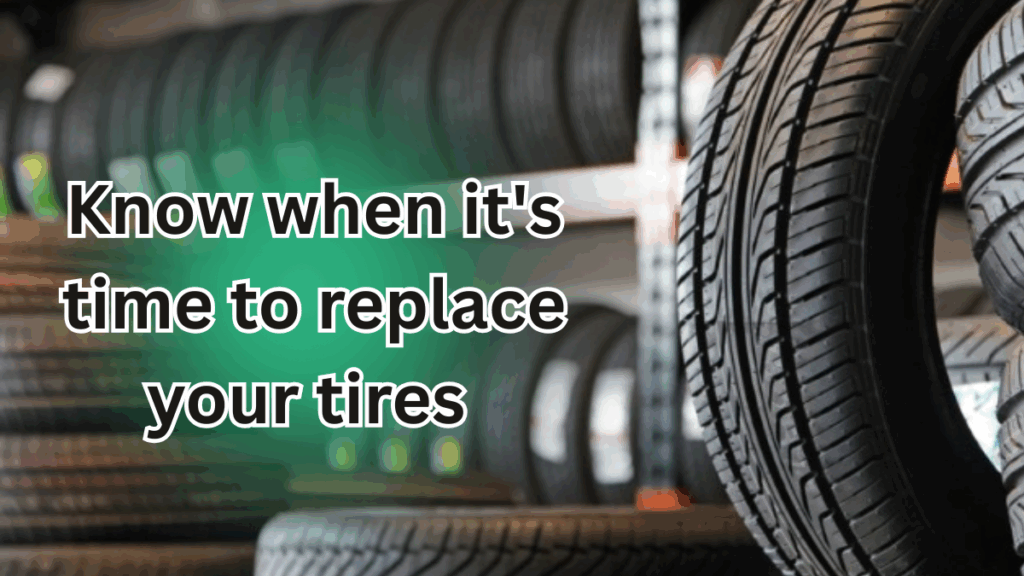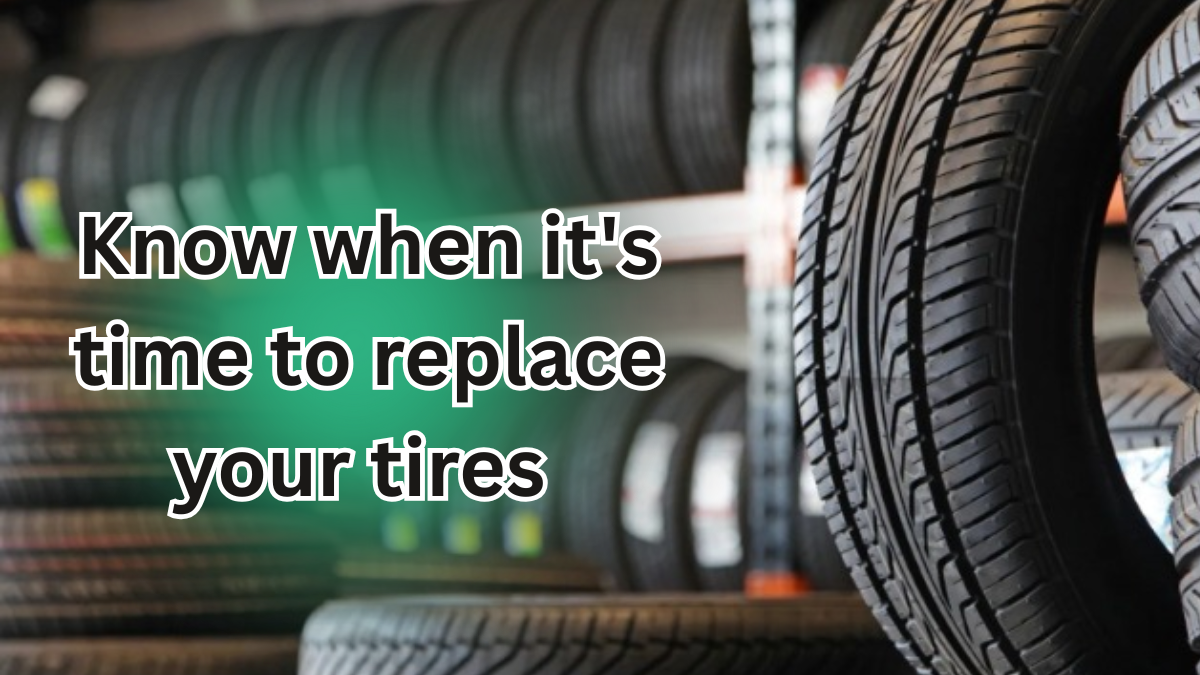When was the last time you took a closer look at your tires? Most drivers assume that tires only need replacement when the tread wears out — but there’s more to it. Recognizing the early tire replacement signs can help prevent breakdowns and keep you safe on the road.
In this guide, we’ll explore how to tell when to replace car tires, beyond just checking the tread.

Why Tire Health Matters for Your Safety
Your tires are literally where the rubber meets the road. Worn or damaged tires can reduce your car’s handling, braking performance, and fuel efficiency. More importantly, they can be a serious safety hazard.
Understanding when to replace car tires can:
-
Improve your car’s handling and braking
-
Boost fuel efficiency
-
Prevent roadside emergencies
-
Increase overall safety for you and your passengers
Common Tire Replacement Signs
Tread Depth Is Too Low
One of the most obvious signs is reduced tread depth. Most experts recommend replacing your tires when the tread is worn down to 2/32 of an inch.
Quick Tip: Use a penny — insert it into the tread with Lincoln’s head down. If you can see the top of his head, it’s time to replace your tires.
| Tread Depth | Condition | Action Required |
|---|---|---|
| More than 6/32″ | Excellent | No action needed |
| Around 4/32″ | Fair | Monitor closely |
| 2/32″ or less | Poor (Unsafe) | Replace immediately |
Cracks, Bulges, or Blisters
Look for any sidewall damage such as:
-
Cracks along the edges or surface
-
Bulging spots or visible blisters
These issues can indicate structural damage, often caused by potholes or hitting curbs.
Car Safety Tip: If you see a bulge on your tire, avoid driving. The tire could be at risk of blowing out at any moment.
Vibration While Driving
Excessive vibration isn’t just annoying — it’s also a warning sign. It could be due to:
-
Misalignment
-
Tire imbalance
-
Internal damage to the tire
If vibration persists even after alignment or balancing, it may be time for a replacement.
Uneven Tire Wear
Not all parts of your tire wear out at the same rate. Uneven wear patterns often indicate:
-
Improper alignment
-
Incorrect tire pressure
-
Suspension issues
| Wear Pattern | Likely Cause |
|---|---|
| Center wear | Over-inflation |
| Edge wear | Under-inflation |
| One-sided wear | Misalignment |
| Patchy spots | Tire imbalance |
Tire Age Over 6 Years
Even if your tread looks fine, rubber breaks down over time. Tire manufacturers generally recommend replacing tires every 6 to 10 years, regardless of how much you’ve driven.
How to Check Tire Age:
Look at the DOT code on your tire’s sidewall. The last four digits show the week and year it was made. For example, “2419″ means the 24th week of 2019.
When to Replace Car Tires — Don’t Wait for Trouble
The best time to replace your tires is before you experience problems. Keeping an eye out for tire replacement signs and following a few key car safety tips can go a long way in ensuring your safety.
Top Car Safety Tips for Tire Care
-
Check tire pressure once a month
-
Rotate your tires every 6,000–8,000 miles
-
Get your wheels aligned annually
-
Inspect tires visually for cuts or bubbles
-
Replace tires that are over six years old
Tire Maintenance Checklist
| Task | Recommended Frequency |
|---|---|
| Tire pressure check | Monthly |
| Tread depth inspection | Every 3 months |
| Tire rotation | Every 6,000–8,000 miles |
| Wheel alignment & balancing | Annually or as needed |
| Visual inspection | Monthly |
FAQs About Tire Replacement
1. How do I know exactly when to replace car tires?
Check tread depth, age, and signs of physical damage like cracks or bulges. If your tires are over six years old, or show signs of wear, it’s best to consult a professional.
2. Are all tire replacement signs visible?
Not always. Some internal damage can’t be seen without professional inspection. If your vehicle vibrates while driving or feels unsteady, have your tires checked.
3. Can old tires still be safe if I rarely drive?
No. Rubber ages over time and becomes brittle, regardless of mileage. If your tires are over six years old, they should be replaced to avoid risks.
4. What’s the safest season to replace tires?
Ideally, replace your tires before winter or the rainy season. Having proper tread during wet or icy conditions greatly improves traction and safety.
Final Thoughts
Recognizing the tire replacement signs and knowing when to replace car tires is an important part of vehicle maintenance. Staying proactive with your tire care isn’t just about longevity — it’s about staying safe on the road.
Click here to learn more
